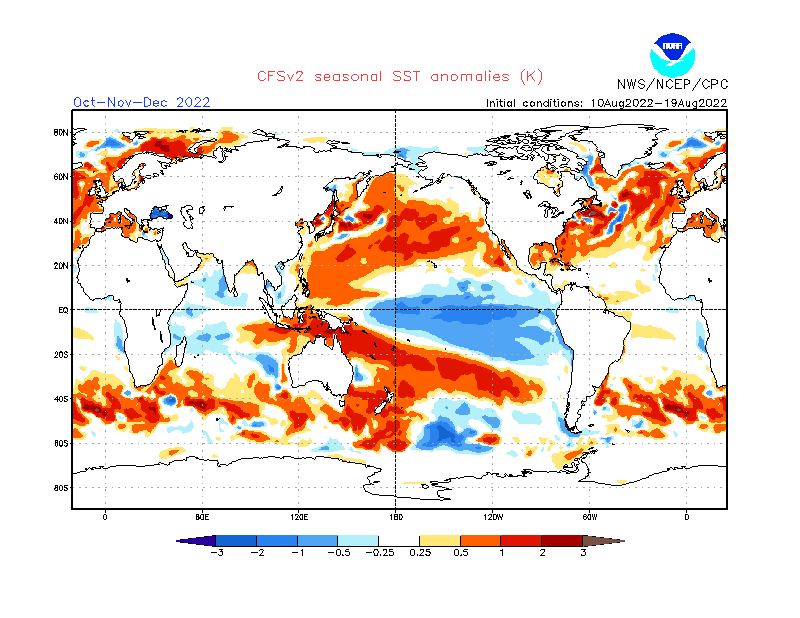Climate Forecast System Version 2

Above: An example of seasonal SST anomalies from the NCEP coupled Climate Forecast System (CFSv2).
NOTE : Official NCEP seasonal forecast outlooks can be found at the NCEP Climate Prediction Center website.
The NCEP Climate Forecast System Version 2 (CFSv2)
Version 2 of the Climate Forecast System was developed at NCEP's Environmental Modeling Center. It is a fully coupled model representing the interaction between the Earth's atmosphere, oceans, land and sea ice. CFS Version 2 became operational at NCEP in March 2011.
Further Information on CFSv2:
Please reference the following article when using the CFS Reanalysis (CFSR) data.
Saha, Suranjana, and Coauthors, 2010: The NCEP Climate Forecast System Reanalysis. Bull. Amer. Meteor. Soc., 91, 1015.1057. doi: 10.1175/2010BAMS3001.1
Please reference the following article when using the CFS version 2 Reforecast model or data
Saha, Suranjana and Coauthors, 2014: The NCEP Climate Forecast System Version 2. Journal of Climate, 27, 2185–2208. doi: http://dx.doi.org/10.1175/JCLI-D-12-00823.1
For further information on CFSv2 please contact cfs@noaa.gov.

Above: An example of seasonal SST anomalies from the NCEP coupled Climate Forecast System (CFSv2).
NOTE : Official NCEP seasonal forecast outlooks can be found at the NCEP Climate Prediction Center website.
The NCEP Climate Forecast System Version 2 (CFSv2) Further Information on CFSv2: Please reference the following article when using the CFS Reanalysis (CFSR) data. Saha, Suranjana, and Coauthors, 2010: The NCEP Climate Forecast System Reanalysis. Bull. Amer. Meteor. Soc., 91, 1015.1057. doi: 10.1175/2010BAMS3001.1 Please reference the following article when using the CFS version 2 Reforecast model or data Saha, Suranjana and Coauthors, 2014: The NCEP Climate Forecast System Version 2. Journal of Climate, 27, 2185–2208. doi: http://dx.doi.org/10.1175/JCLI-D-12-00823.1 For further information on CFSv2 please contact cfs@noaa.gov.
Version 2 of the Climate Forecast System was developed at NCEP's Environmental Modeling Center. It is a fully coupled model representing the interaction between the Earth's atmosphere, oceans, land and sea ice. CFS Version 2 became operational at NCEP in March 2011.